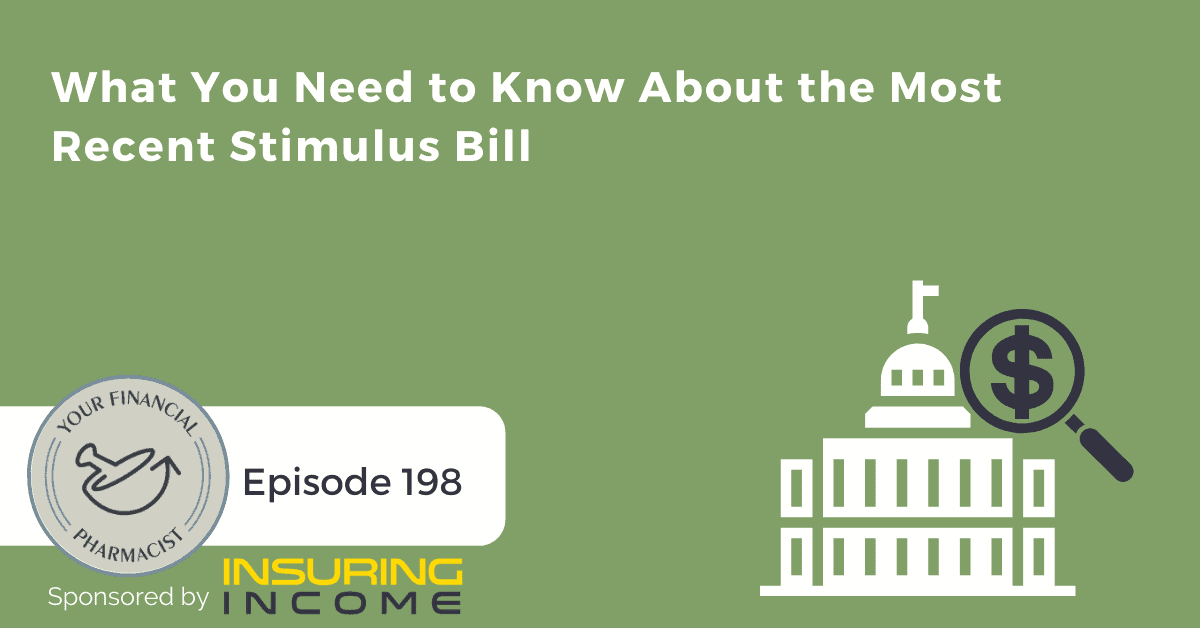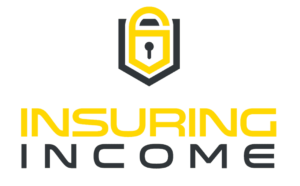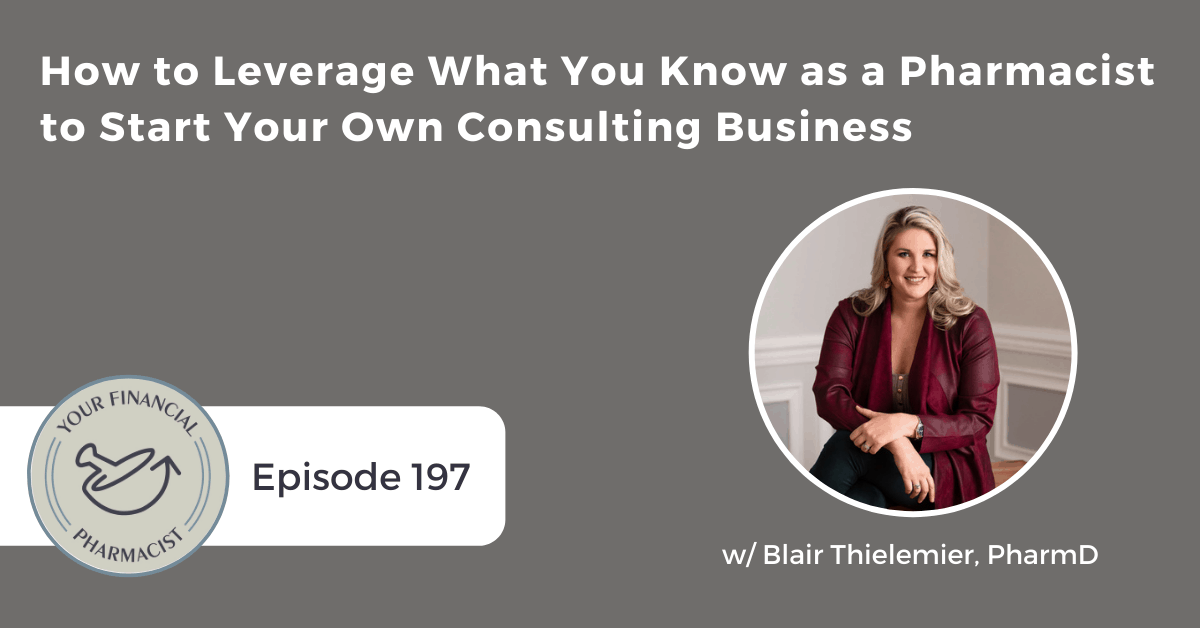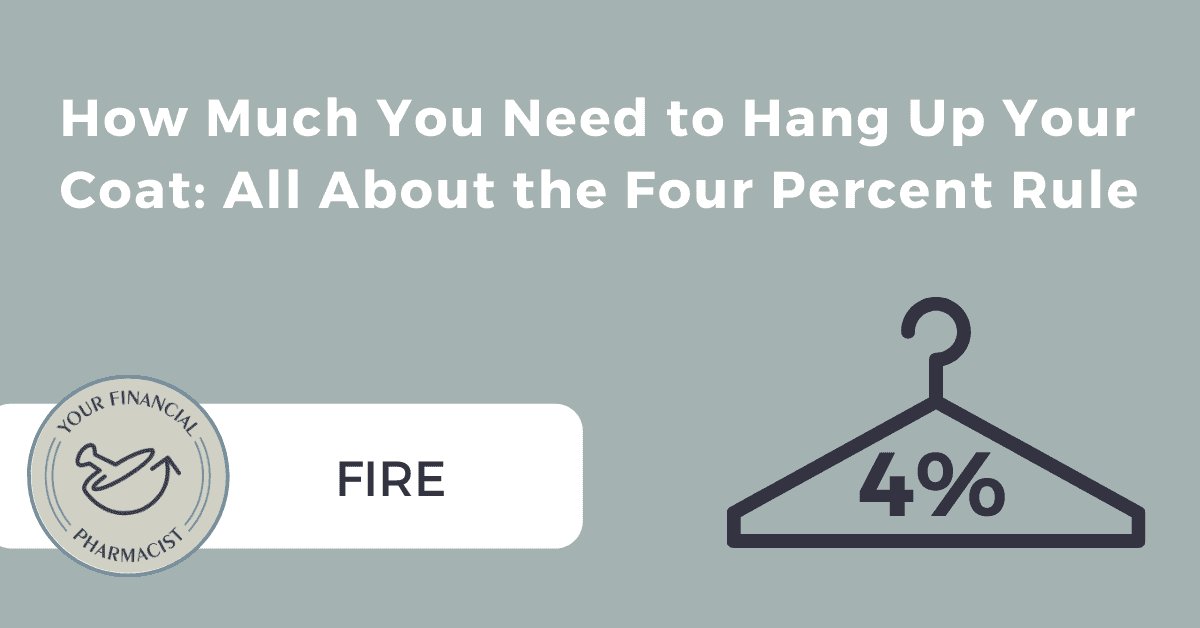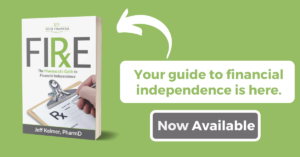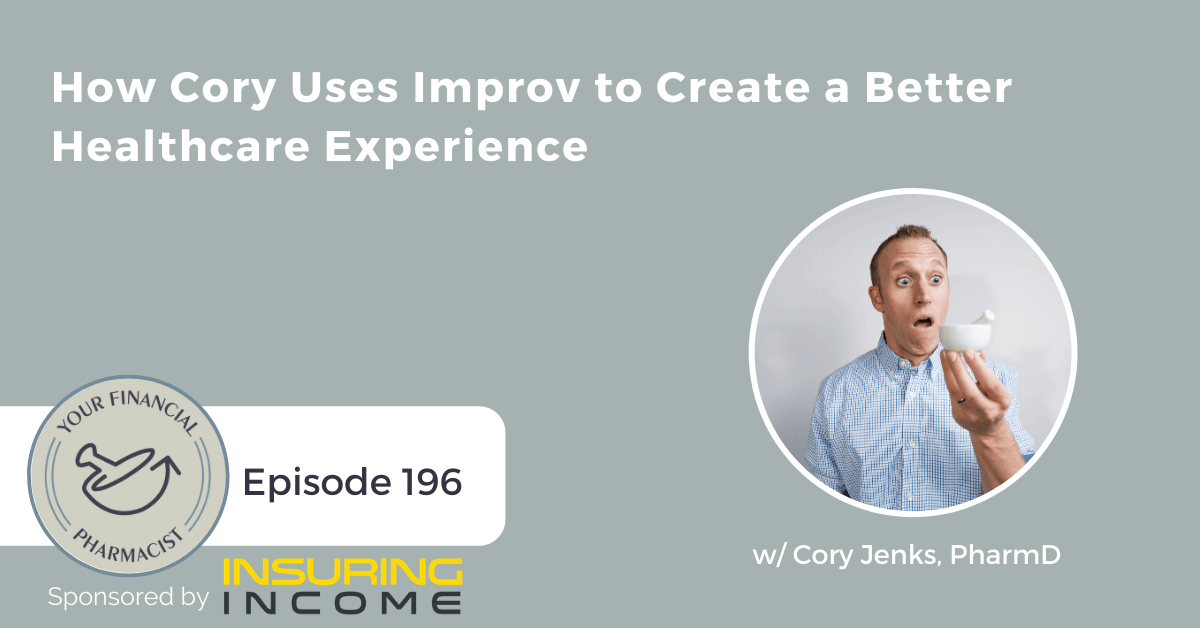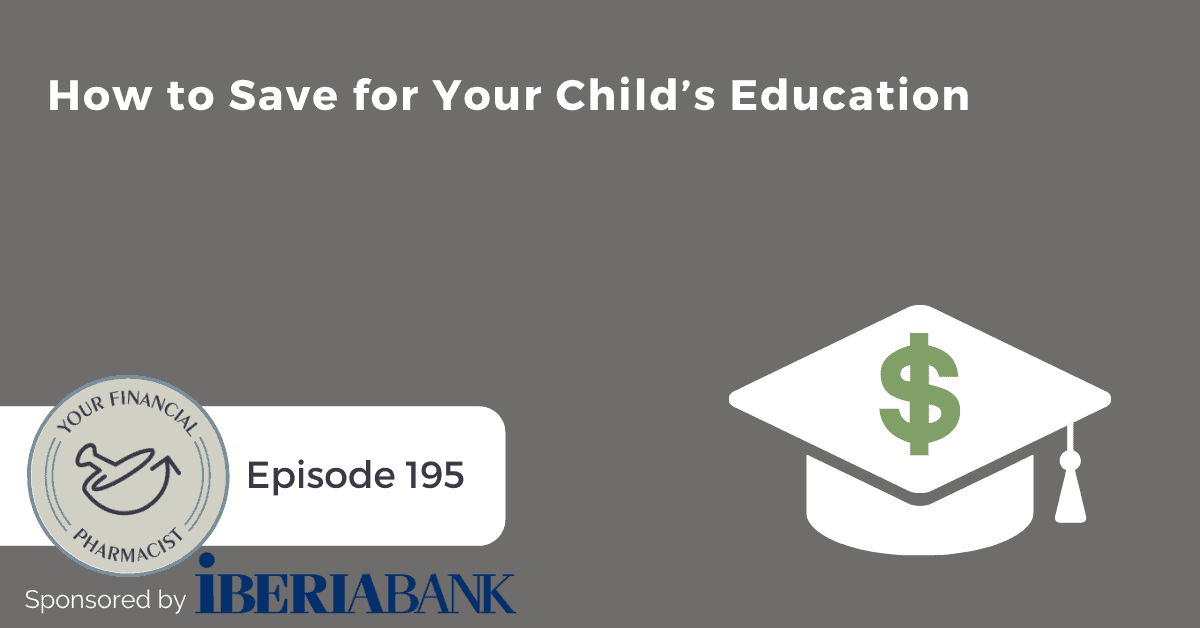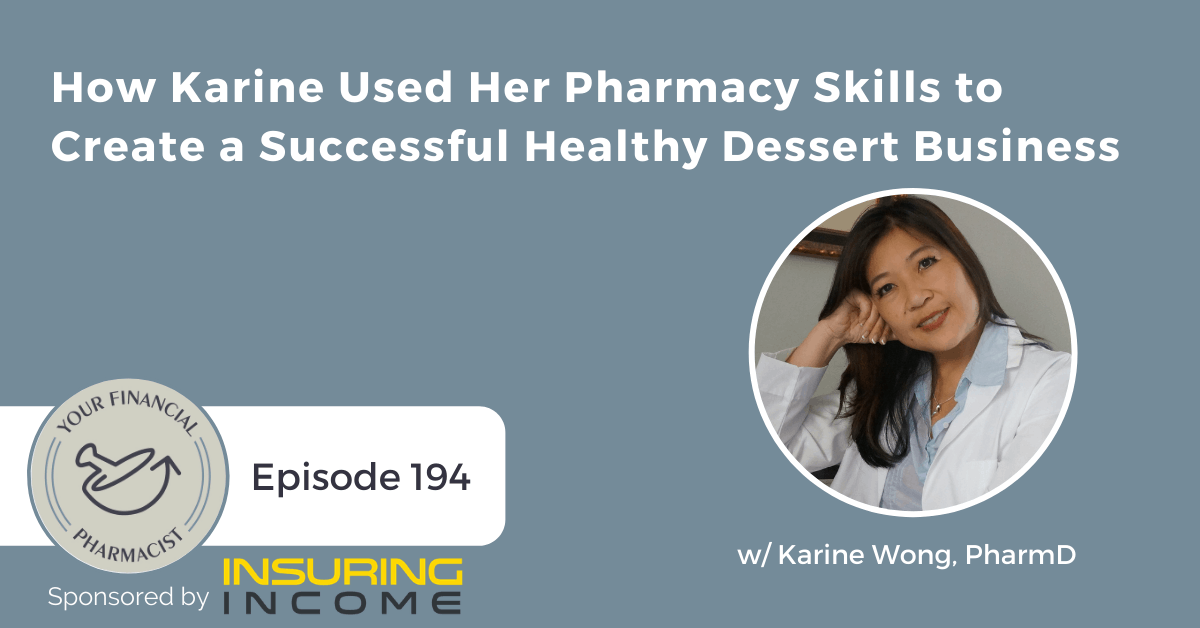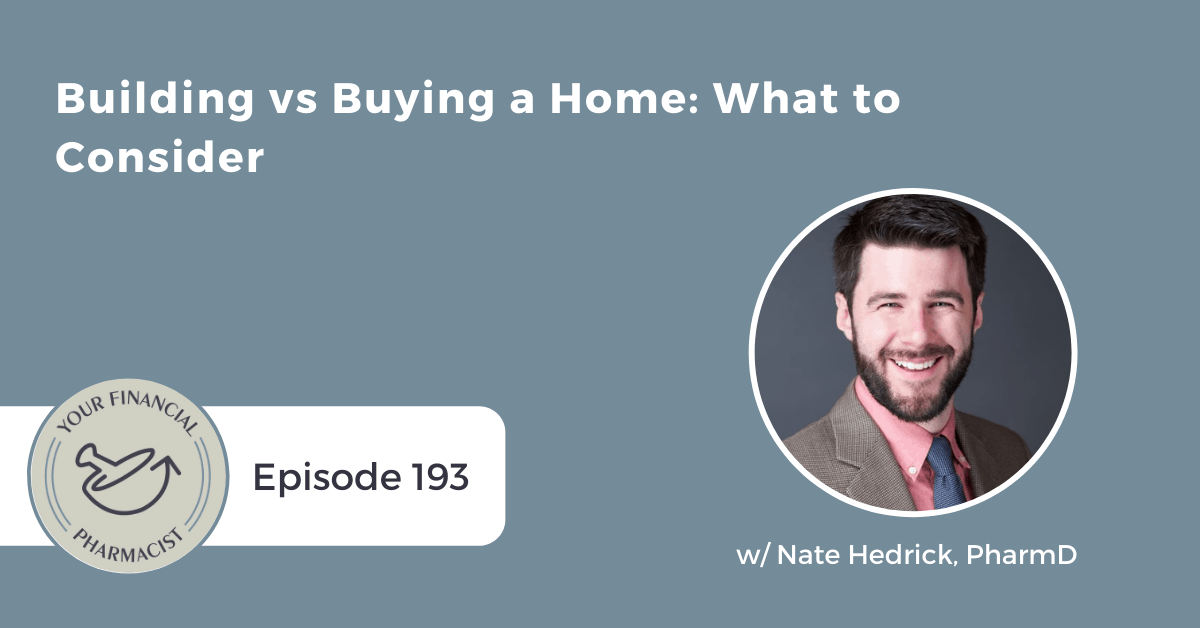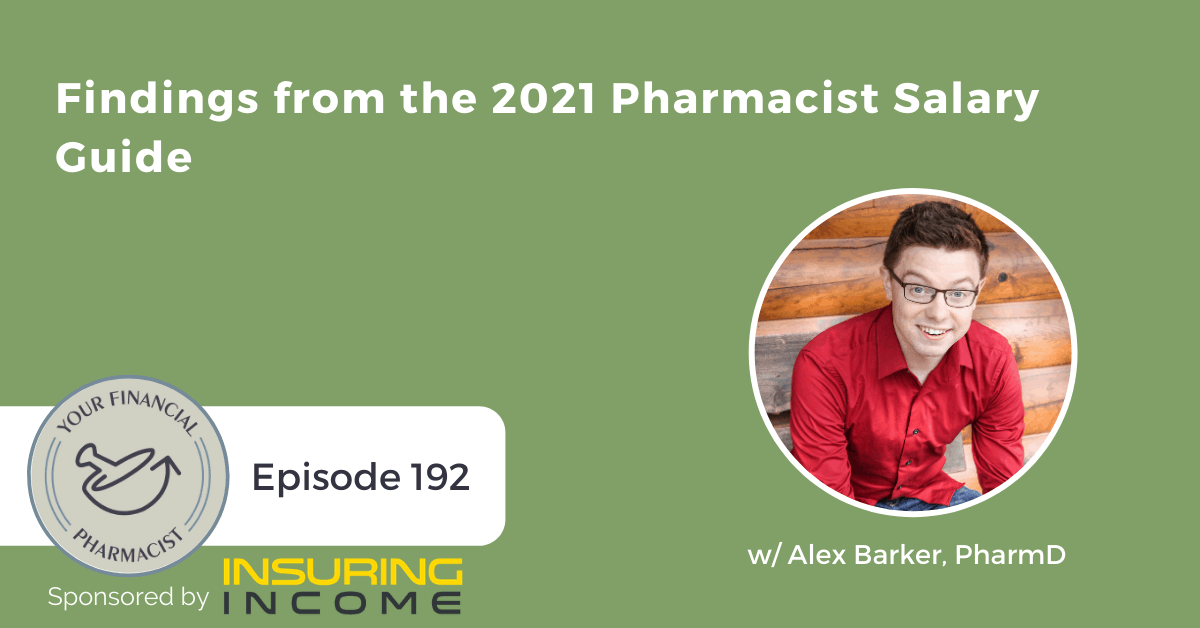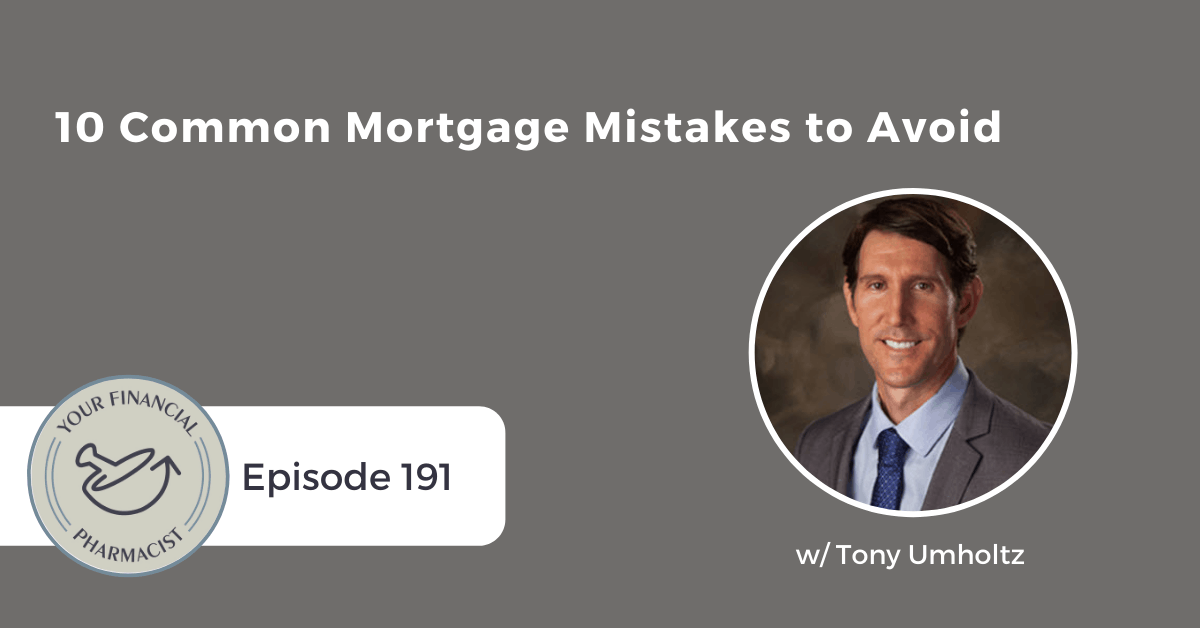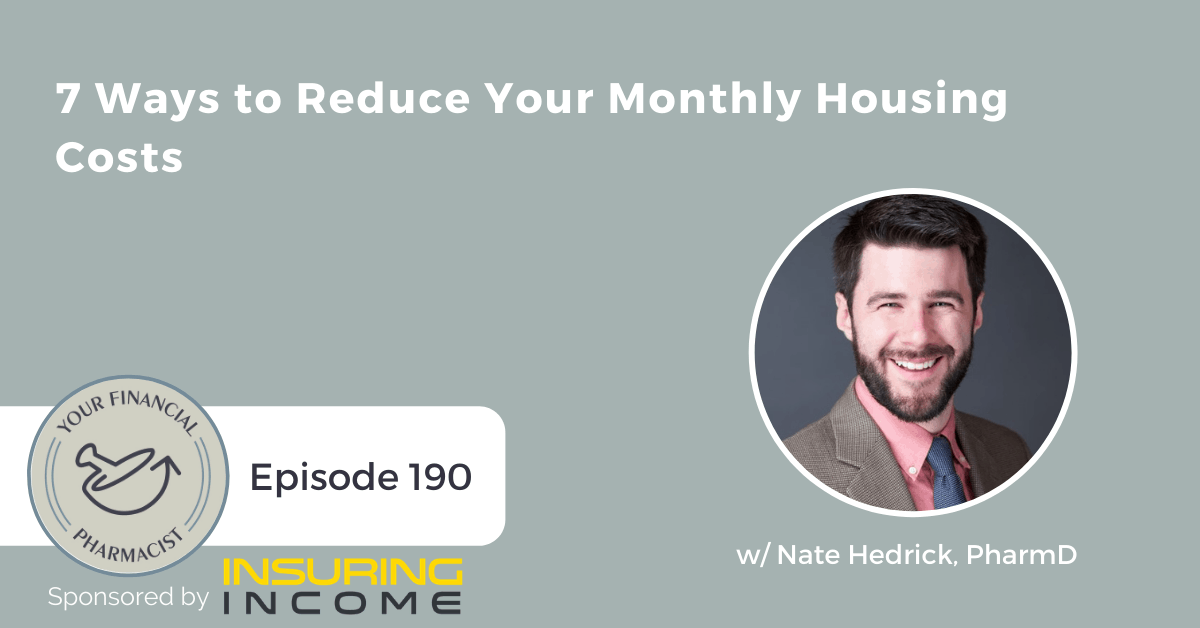What You Need to Know About the Most Recent Stimulus Bill
On this episode, sponsored by Insuring Income, Tim Baker and Tim Ulbrich break down the key points of the most recent $1.9 trillion stimulus package also known as the American Rescue Plan Act of 2021. Tim and Tim discuss the items that they think are the most relevant to your financial situation and plan, including the stimulus payments, the expansion of the child tax credit, the unemployment compensation and benefits, and what to make of the student loan forgiveness provisions being tax-free through the end of December of 2025.
Summary
On this episode, Tim Ulbrich and Tim Baker break down the key points of the American Rescue Plan Act of 2021 and the relevance of these key points to you and your financial plan. Tim and Tim review, in detail, the stimulus payments which many people have already received, how the total amount is calculated per tax filer or family, and the nuances and differences between this stimulus package and the two previous stimulus packages.
Tim Baker explains the new phase-out guidelines for stimulus funds in the current package, how the income ‘cliff’ could impact you, and a few ways to implement strategic financial planning to maximize your stimulus. He also breaks down the history of the child tax credit, how this package changes the way that the child tax credit benefit is applied and received, and provides a general guideline for calculating your expected child tax benefit.
Tim and Tim share about the changes and updates to the unemployment compensation and benefits as they relate to the current stimulus package. They also make some general predictions about the future of student loans and student loan forgiveness given the current impact of student loans debt on borrowers and the growing pressure from student loan holders for wide-sweeping change.
Mentioned on the Show
- Insuring Income: Get Quotes and Apply for Term Life and Disability Insurance
- Register for the free webinar: Student Loan Strategies for 2021
- The Pharmacist’s Guide to Conquering Student Loans by Tim Church, PharmD
- America Rescue Plan Act of 2021
- US Department of the Treasury FACT SHEET: The American Rescue Plan Will Deliver Immediate Economic Relief to Families
- Coronavirus Aid, Relief, and Economic Security Act (CARES Act)
- Consolidated Appropriations Act, 2021
- Schedule a free Discovery Call with YFP Planning
- Work with a YFP Tax Pro
- IRS: Get My Payment
- Tax Cut and Jobs Act
- Kiplinger: 2021 Child Tax Credit Calculator
- COVID-19 Relief: The Latest from the Treasury Department
Episode Transcript
Tim Ulbrich: Tim Baker, glad to have you on the show. How is everything going?
Tim Baker: Busy. Tax season is upon us, so yeah, it’s been really busy. But good. How about you, Tim?
Tim Ulbrich: Good, speaking of taxes, we’re going to come back to that topic today as we dig into the American Rescue Plan Act of 2021, also known as the most recent stimulus bill. And this of course, as our listeners already know, is the follow-up to the CARES Act from March 2020 and then the Consolidated Appropriations Act that was passed in late December of 2020. So the primary focus of these bills of course have been related to COVID-19 relief, but as we will discuss, there certainly are some broader implications here that we need to consider. And while this bill contains lots of things, many of which we’re not going to touch on today, we’re going to hit on those parts that we feel like are most relevant to the financial plan of the YFP community and to those that are listening. So Tim Baker, I’m going to put you on the hot seat here to try to break down hundreds of pages of bills as we talk about what does all of this actually mean? So give us the 10,000-foot view. What is the American Rescue Plan Act? And really, what are some of the key pieces that the bill focuses on?
Tim Baker: Yeah, when I see the numbers, Tim, I actually think they look like — it reminds me of like professional sports contracts, you know, when you first saw that first like that $100 million contract and now they’re signing ones that are $250 million. That’s kind of what it reminds me of. So the American Rescue Plan Act of 2021 was signed into law on March 11, 2021. It’s a $1.9 trillion — with a t — piece of legislation that, according to the Department of Treasury, will change the course of the pandemic and deliver immediate and direct relief to families and workers impacted by the COVID-19 crisis through no fault of their own. So this has been billed, pun intended, as one of the most progressive pieces of legislation in our history. And I think what Congress and what the president is seeing is that they’ve been — I think the numbers are like 9.5 million workers that have their lost jobs and 4 million have been out longer than a half a year or longer. So what this is really meant to do is kind of stimulate and help those that are in need. So to your point, there’s lots of things that this covers, one being like infrastructure, which we’re not even going to get into, but help with small businesses and vaccinations and testing and things like that. But I think what we try — want to do here is really kind of distill it down to what does this mean for many of the listeners that are tuning into this? And how does this affect me? And I think that’s what we’re excited to kind of dig in and jump in and talk through.
Tim Ulbrich: Yeah, and to that point, we’re going to cover three main areas: Economic Impact Payments, also known as the stimulus payments, the Child Tax Credit, which I think is really substantial in some of the changes that are forthcoming there that I think will have an impact for many pharmacists listening and their families, and then also some that may have been impacted in terms of jobs and unemployment compensation. So those are the three areas that we’re going to focus on. Again, certainly not all-encompassing of what this piece of legislation includes but the three that we feel like are most relevant to you. So Tim, let’s start with the stimulus payments as these have already started going out, probably at the time of publishing for those that are eligible, it likely has already hit their bank account. But how much are people getting? What are the phaseouts here in terms of Adjusted Gross Income? And what’s different about this round of stimulus payments?
Tim Baker: Yeah, so stimulus payments or recovery rebates, whatever you want to call them, you know, this is really, to your point, Tim, round 3. So the first one with the CARES Act was, you know, a lot of people received or the tax filer received $1,200 and $500 for dependents. And dependents was more strictly defined. And then second round, I think it was something around $600 per person or per — is what they were looking at. This is the most generous. It’s the greatest stimulus, it’s $1,400 per person. Think of it as taxpayer or spouse. But then it’s also $1,400 for dependent. So a dependent is not strictly defined — this is not just anyone under 17. This could be a college-aged 21-year-old, somebody that you actually provide for the health and welfare. But it could also be for an elderly parent. So that was one of the big things that prior bills had really kind of left out in the cold that those parents that were caring for elderly parents and now all of that is included. So it is a greater benefit in terms of total dollars. It is a better definition in terms of what it qualifies as a dependent. But the big thing that changes are the phaseouts. So — and I wouldn’t even really call them phaseouts. They’re more like cliffs. So for the phaseouts for this round — and this is going to be based on either your 2019 or 2020 tax return. So for a lot of people — and we’re seeing this on the tax side — it might be beneficial to you to kind of hold filing your taxes or not. And this is one of the areas that’s going to be a big part of this. So for a single income or single tax filer, income below $75,000 in Adjusted Gross Income, you’re going to get that full $1,400 times a spouse and dependents, etc. So if you’re a single parent and you have a dependent, you’re going to get $2,800. Now the phaseout or more likely a cliff is very narrow. So once you get to that $85,000, so $75,000-85,000, then basically that rebate or that stimulus check is gone. For married filing jointly, the number is $150,000. And then it completely phases out at $160,000. So before these phaseouts were greater. Now they’re more like a cliff. So the idea here is — this is where planning can be very important here because when we’re actually seeing this — you know, I mentioned that tax season is upon us where as we’re talking through clients, we’re saying, “Hey, this return is ready to be filed. But we’re just holding onto it until the stimulus gets figured out and then we will go ahead and file the 2020, the tax return.” And it’s just basically a planning decision to get the most benefit for that client as we’re looking at those situations.
Tim Ulbrich: Tim, I suspect we have many, many folks listening that that cliff, as you put it, which is really one of the main things that’s different here in addition to the amount of these payments, are going to be impacted because of that cliff. So if I’m someone who’s listening and 2019 and 2020, let’s say I was just above, married filing jointly let’s say for the sake of example, two dependents, so you know, if I were under that $150,000 would have been $5,600 if I’m doing my math correctly. Let’s say someone is just above that $160,000. Out of luck? It is what it is? Like what’s the strategy, if any, here for folks that are just above that cliff and that threshold of those payments?
Tim Baker: A lot of the — and we weren’t sure about this until recently — but a lot of the, with the extensions of the tax filing date, a lot of the targets or the accounts that you can also put money into like an HSA, like an IRA, have also been extended. So it might be where you shift your strategy or you’re saying, hey, I was really focused on this debt, i.e. student loans, that we know that our $0 payments with the CARES Act going until later this year. Maybe you’re trying to get ahead of that, but maybe you do shift some money into some of these other types of accounts to lower your AGI, specifically the HSA was probably the one because there’s no income limits. So these are things that you could do before you file. It’s a little bit of a circular logic because you have to — sometimes you have to get all those numbers in before you can actually figure it out, which again, it’s helpful when you’re having someone help you file your returns. So there can be some planning that you could do before you actually file. But there’s also a look ahead. So the bill basically affords people that potentially have a lower ‘21 tax year, so this year, that when they go to file in 2022 get a true-up or a credit to their taxes say in the future. So basically, the way that this was explained to me is that if you have your 2019 or 2020 return, and you’re in that phaseout, within that range, you’ll get a payout. And that’s typically direct deposit with whatever bank account that you have on, which make sure you do that. So just a message out there: Make sure your banking information is correct. We’ve had some that was incorrect, and that can take a long time to unwind. But the second checkpoint is if your 2020 AGI is less than 2019 and you filed before — so say you already filed your taxes, there is what’s called the additional payout determination date, APDD, that you could potentially — the IRS could potentially look at it and true you up if 2020 is lower than 2019. And then looking ahead to 2021, if the AGI is less than that upper threshold, the IRS will send an additional balance adjustment. So there are going to be some kind of fallbacks to make sure that the people that are in need of relief that are in and around these AGIs are going to be made whole. But there could potentially be some planning to get that money sooner.
Tim Ulbrich: Great summary. And I think what you just mentioned there highlights to me the importance of the planning, not only in the financial plan side of course, which we have been adamant about promoting the value of it and what our planning team does but also on the tax side. I mean, for that reason right there, if you look at someone who may be in this situation, what’s ahead for 2021, what could be done from a planning tax perspective with these numbers in mind as they look ahead to the year. So for folks that are interested in that service and working with our tax professional, working with our financial planning team, you can head on over to YFPPlanning.com and schedule a discovery call.
Tim Baker: And I would just say as a note to this, like this could be really where you are, if you have any control over things like bonuses or unpaid leave and things like this, you know, the planning I think potentially associated with this if you have a young family and you could potentially take FMLA or things like that, these are real-life things that it might not be worth you making that additional money to actually spend that time at home with your family. And that’s the impact of this is if you do a little bit of planning, you can get a really greater benefit that’s really even outside of the numbers of just the dollars and cents, so being paid to stay home in some way.
Tim Ulbrich: So Tim, you mentioned a good PR campaign for the IRS, make sure you have direct deposit set up. Make sure all that’s good.
Tim Baker: Yeah.
Tim Ulbrich: But if someone’s listening, they think they should have received a payment and they haven’t yet gotten one, what’s the strategy here?
Tim Baker: Yeah, just like anything tax-related, I put the heaviest weight on the IRS.gov. So if you go to www.IRS.gov/coronavirus/get-my-payment — and we can put this in the notes of the, you know, you should be able to see kind of the status and what that looks like. So the IRS — and you could probably just Google “IRS stimulus check,” and you’ll get this link and that basically will direct you in what you need to do.
Tim Ulbrich: Tim, the other thing that comes to mind here is, you know, if I’m listening today, I’ve received perhaps a previous stimulus payment in Round 1 or 2 that maybe I’ve put in a savings account, it’s still sitting around or it might have been added too here in Round 3, I think it’s a good time to think about what are some considerations in the event of an unexpected windfall? So of course, assuming someone doesn’t have a short-term need for these dollars, gap of employment, some type of other need, how do you think through this in terms of OK, there’s dollars here now that perhaps weren’t planning on seeing those dollars, and the options of how somebody can best allocate those dollars to their financial plan?
Tim Baker: Yeah, so I’m a big, big proponent of assigning kind of a purpose for like inflows. So you know, like with our business, Tim, like we get profit distributions from the business, like I have a set purpose for that. And it changes from time to time, but I know before the money comes in like what’s that for. So you know, for a lot of us — and again, if we rewind to 12 months ago when everything started to go down and we were starting to see job loss and things like that, you’re like, whoa, OK, this is why we have that emergency fund. And for a lot of people, that can be tough to swallow, especially because where interest rates are right now, you’re not being rewarded as a saver. You know, you’re more rewarded as a borrower for anything just because rates are so, so low. So you know, to me, it’s really getting comfortable with OK, if there was a catastrophic loss like me or my spouse can’t work and we don’t necessarily have the means to generate income quickly, just making sure that that is on point, the emergency fund is really important. But it can be a little bit of a double-edged sword because sometimes we get people that come and work with us and they have $120,000 in the bank and you’re thinking like, oh, that’s a good problem to have. And it is. But it’s a problem nonetheless. So to me, it’s really about once you feel comfortable with those cash reserves is then getting that money into the market. Now right now, one of the things that was not included in this, there was no RMD component to the bill. So you’re thinking like, OK, what’s an RMD. An RMD is Required Minimum Distribution. So once you get to a certain age — and I think they’ve recently changed this, but it was 70.5 — but once you get to a certain age, the IRS is like, “Hey, Tim Ulbrich, remember all that money you squirreled away in your 401k and you haven’t paid any taxes on it? Well now, we’re demanding, we’re requiring you to distribute some of that to yourself that you pay taxes on.” So they didn’t put anything in the bill with this because to be honest, those types of people are not really in need. It’s like, OK, you have all this money squirreled away and you don’t need it to live? Like there’s no reason for a stimulus or some support there. So to me, it’s really about getting the money into the market in a way — so that can be an HSA, it could be an IRA, that could be a brokerage account. And because of the way that rates are, you know, it’s getting invested, or it could be actually looking at something that is more life planning-related. So I’ve had clients recently that are pulling money from potential retirement accounts to do something for their family, which is like a vacation home, a cabin in the woods, that they’re asking me is this crazy? And I’m like, no, not really, because again, this is a use asset that you’re going to be able to rent out, you’re going to be able to enjoy with your family. You’re kind of trading one asset for another, and we’re doing it in a way that kind of minimizes the penalty and the impact. But things like that is like getting creative. And one of the things that you could do, Tim, is you could just stick this money into a checking account and it really does nothing for you. It doesn’t enhance anything about your life or your future plan. And that could be problematic as well.
Tim Ulbrich: And I think this is a timely topic, Tim. I’m thinking of folks that not only have received a windfall through like a stimulus but also may — I’m assuming many listening are still in this time period where they’re in administrative forbearance on their student loans. So dollars that were otherwise being put towards debt that maybe they’re not making those payments, obviously individual to everyone’s situation. Here, there’s also additional dollars. And I think this really highlights to me the benefit of you have a plan in place, you’ve been intentional, you think about the goals. And when that windfall happens, when something happens like you don’t have to make student loan payments, you’re able to quickly identify and direct where those dollars are going to go because you’ve already established the goals and the plan to support those goals.
Tim Baker: Yeah, and I think it goes back to the planning of — in a lot of ways, planning can start with us putting out fires, so to speak. But then it can really evolve to challenging the client to think outside of what is normal, what is expected. And case in point is like everyone thinks — a lot of people think, oh, I have to work until I’m 60 or 65. I’m like, well, do you? And again, this is potentially something that we want to challenge clients on and say like, “OK, we have resources that are here that we can direct in a way that, again, you feel that you’re living a wealthy life both today but then in the future.” I think going from that scarcity mindset to more of an abundance mindset and challenge the client to push their planning in a new direction I think is important too.
Tim Ulbrich: So let’s shift gears to the child tax credit. I think this one has made a significant splash as a part of this bill. Somewhat I guess difficult just to understand exactly what is changing, what’s going to be different, who qualifies, who doesn’t. But I suspect listening are going to be interested in watching this unfold to understand how this impacts them and their personal situation. So child tax credit, tell us a little bit more, Tim, about what’s included in the American Rescue Plan as it relates to the expansion of the existing child tax credit that we have.
Tim Baker: Yeah, and this actually was a tax credit that was expanded in the Tax Cut and Jobs Act under the Trump administration. So back in the day, it was you had a child and it was $1,000 credit. Now before, we used to get exemptions on the tax return and those have gone away. But one of the things that the Tax Cut and Jobs Act did is that it changed the credit, it doubled it from $1,000 to $2,000. And then it really expanded the phaseouts. So at a baseline today, if you have a child, you get a tax credit of $2,000 and that doesn’t phase out until $200,000 for a single taxpayer and doesn’t phase out until $400,000 for a married couple filing jointly. So it’s already a lot more generous. And then with this extra temporary provision as part of the American Rescue Plan, it actually increases more. So the credit amount has been increased so it goes from $2,000 to $3,600 for children under the age of 6. And that’s by the end of the tax year. So I think Olivia turns — I think — Olivia turns 7 this year, so I’m going to be over that. But then it does go to $3,000 for other children under the age of 18 by the end of the year. The example here would be if you have three kids, 2 years old, 4 years old and 8 years old, previously that would have been a flat $6,000 credit. So $2,000 times each kid, so $2,000, $2,000, $2,000 would be the $6,000 credit. Now the credit would actually be $10,200. So you get the full credit for your 2-year-old, $3,600, a full credit for your 4-year-old, which would be $3,600, and then $3,000 for your 8-year-old because you’re above the 6-year-old threshold. So that would be a total of $10,200. So for those of you that have lots of kids — Tim Ulbrich — this could potentially be a big benefit. So the other big part of this is that the scope has been expanded so children 17 years old and younger as opposed to 16 years old. So it gives you an extra year. Now, the other things it does is it follows the same phaseouts as the recovery rebate, as the stimulus check. So again, from a rebate perspective and from a child tax perspective, for married filing jointly, that $150,000-160,000 is critical. And finally, the one big thing that it does and that I want to go through the advanced payments really quick, but it’s now fully refundable. So non-refundable tax credits, Tim, basically what that would mean is let’s pretend at the end of day, you have a $10,000 tax bill. But then you have $10,000 of fully refundable, so that would basically, it would zero out your tax bill. If you had $12,000 of a refundable tax credit, you would actually get $2,000 back. But if you had $12,000 of a non-refundable tax credit, it would just zero it out. So for the IRS, the tax credits are the most generous in terms of credit versus deduction. But a fully refundable credit is even better because that actually sends money your way versus this is zeroing out your balance. So that’s really important.
Tim Ulbrich: Tim, I want to rewind and make sure I understood correctly — and correct me if I’m wrong. So they are looking at when we talk about the phaseouts, they’re looking at 2020 income in terms of AGI?
Tim Baker: It’s going to be whatever’s on file.
Tim Ulbrich: Whatever’s on file, OK.
Tim Baker: Yeah, so again, this is one of the things where you’re — if your 2020 income was higher than 2019, you know, especially if it’s within that threshold, if you’re filing your taxes and that disqualifies you, you want to make sure that you put a pin in that and not file. And that’s just a little bit of planning. Now, if it has gone down because of the pandemic and say you made $180,000 as a family and this year, you’re going to be making $145,000-150,000, then absolutely get that tax return filed and get the benefit of both the stimulus checks but also the child tax credit.
Tim Ulbrich: Gotcha. And if I understand correctly before we go onto the advanced payments and how these are going to be distributed or at least what we think they will be as of now, the phaseouts — so you mentioned that $200,000/$400,000 on the existing tax credit of $2,000. And then you mentioned the phaseouts of income here that also mirror what we saw in the stimulus payments. That is for the bonus amount, correct? So from what is going $2,000 to $3,000 or $2,000 to $3,6000?
Tim Baker: Yeah, that’s right. So you have the baseline amount that’s the what’s part of the Tax Cut and Jobs Act. And then yeah, this would be the — it’s called the extra temporary benefit.
Tim Ulbrich: OK.
Tim Baker: So yeah, that’s right.
Tim Ulbrich: And so for those that are listening like I was when I read this, like my goodness, just tell me what the number is please. So there’s a good calculator I found on Kiplinger.com we’ll link to in the show notes where you can enter in AGI, kids that are under 6, kids that are above 6, and it will project out what that payment will be. But of course, again, I think working with somebody and thinking about some of the strategy side of this can be really helpful as well. So Tim, how will this be paid out? Talk to us about the advance payments of credit and ultimately at least what the IRS is thinking right now, although to be fair to the IRS, they’re also in the midst of tax season, of course we have an extension to that as well. So I think there’s going to be further guidance coming in this area. But what at this point are we expecting?
Tim Baker: Yes, this is kind of a nuanced with this particular part of the bill is that this is actually going to paid out almost like a stimulus check versus like a credit, which you typically don’t see with this type of legislation. So you’ll likely get half of the credit paid out on monthly checks beginning in July. And I think one of the — I might have said it was based on the ‘19, but it actually might be based on 2020 regardless because the payout is going to start in 2021, in the summer. So this might be where it is tacked on to the 2020 versus ‘19. But another example, your AGI is under the $150,000, you have a child under the age of 6, the credit, the total child tax credit would be $3,600. And you would get basically $300, so $300 per month or $1,800 basically between July and December. So the idea is they want to try to get more money into people’s hands and then the rest of that, the other $1,800 would be when you file your 2021 taxes. So now, if you look at the benefit, when you stack it up, in other years that $2,000 credit, which we would just get basically at tax time, it goes from $2,000 to $3,600 and then they divide up half of it is coming to you in check form between July and December and the other half at tax time. That’s the big thing. And again, this is going to be — to clarify from what I said before — this is going to be for 2020, your 2020 taxes, and then basically pay out the rest of the year and then the credit or the true-up would be in 2021 when you file your 2020 taxes. So clear as mud.
Tim Ulbrich: And as I understand it, there’s going to be a portal where folks can enter in information, update it, so somebody that says, “Hey, Tim and Tim, we’re having a baby in 2021 will we be able to update that information?” or if payments go out without updated information that then essentially there would be a true-up when they go to complete that 2021 return.
Tim Baker: That’s correct. Yeah, the idea is that at the end of it, you know, if you filed in subsequent years and you’re in the following year that what the IRS or what the government is trying to do is make sure that you get those dollars that you wouldn’t have otherwise because of yeah. So from a behavioral perspective, it’s going to be interesting because, again, before this was all just kind of figuring out on the wash at tax time, but now you’re actually going to see people starting to receive checks throughout the course of the year, which is, again, a little bit different than what we’re typically used to outside of these bills that come around the economy starts to tank.
Tim Ulbrich: And I think the other thing, Tim, here that’s interesting and certainly we’ll keep the audience up-to-date for folks that are watching this as well is nothing has been decided yet, but my understanding is there are some policymakers that are considering, you know, is this expanded credit something that should become permanent? And so you know, obviously that has implications beyond what we’re talking about here but could be significant to many folks in terms of what that means for their financial plan. So that’s the child tax credit, as you said, clear as mud. So the last piece we want to briefly touch on is unemployment compensation. So we obviously know some of the challenges you referenced early on, Tim, in terms of some of the job loss. We suspect that some listening in terms of their pharmacy positions may have or are currently facing a situation of unemployment or a spouse or significant other, so I think this is noteworthy. What do we see in the American Rescue Plan Act as it relates to the unemployment compensation?
Tim Baker: Yeah, so the good part about this is that it’s been extended. So one of the big headlines in and around before they signed this bill into law and they were going back and forth between the House and the Senate was that, hey, these unemployment benefits were expiring. So typically that’s the beauty of deadlines, right? So the pandemic unemployment assistance, these benefits were set to expire March 14. They’ve been extended until September 6. So if you fall under that bucket, you’ll have a few more months of relief. And then the other big thing that is important to note that is the federal pandemic emergency unemployment piece, this is the additional check amounts. So you have the state benefits, so the state will pay you, you know, $500 a week for unemployment. But then what the federal government did is they added another $300 per week. So this has also been extended, which is important because there’s some states that the way they calculate their unemployment, it’s tough to live off of or survive. So these are the big things. And then the other thing that happens, happened, is that the first $10,200 of unemployment is tax-free. So what this means is that for per person, so if I’m unemployed, the first $10,200 of unemployment compensation received in 2020 will be tax-free. So the AGI must be under $150,000 AGI. So that’s the number you keep seeing. And this is all filing statuses. So it doesn’t matter if you’re single or married filing jointly. And this is a true cliff. So if you make $150,001 and you had unemployment, that unemployment will be taxed. If it’s just under that, then that will be tax-free. So this is a true cliff, there’s no phaseout whatsoever. So again, if you, you know, did file for unemployment and you received compensation, this will be another thing to take a look at to make sure that you’re under that because that could thousands of dollars in terms of your tax liability.
Tim Ulbrich: Tim, the last piece I wanted to ask you about, it certainly did not make as much of a splash in the news as did the stimulus components, the tax credits, or the unemployment compensation, but there was some news that came out related to a loan forgiveness that I suspect some of our listeners are trying to figure out does this mean, if anything, for my own personal loan situation? So specifically related to what we often talk about, Non-Public Service Loan Forgiveness and the tax-free component, tell us about the change here as it relates to loan forgiveness and what we saw in the American Rescue Plan Act.
Tim Baker: Yeah, you know, the big question that a lot of people were saying is like, what’s the loan forgiveness in the bill? And there really wasn’t much in there. And I think a lot of people think that this could be potentially a precursor to what President Biden wants to do in his tax bill. But the big thing that did come out is that it does include a discharge of student debt as taxable income for both federal and private loans. But this debt discharge has to occur between the years 2021 and 2025. So as most people know with PSLF, you know, if I am in that program and I do my 120 payments over 10 years and I have $60,000 that’s forgiven, because of that program, that $60,000 is not viewed as taxable income. But if I’m in a non-PSLF forgiveness option and I do that for 20 or 25 years, that’s $60,000 is then reported as taxable income in the year of forgiveness. So if I make $100,000 and that year I get $60,000 forgiven, it’s as if I earned $160,000 that year. So this is one of the things that they added. Now, for a lot of the non-PSLF forgiveness strategies, some of these won’t even become due until like later in this decade. So it doesn’t really move the needle much.
Tim Ulbrich: Yep.
Tim Baker: I think what this is really trying to address are you get excited or I’ll get excited sometimes when I see like oh, there was student debt forgiven. But it was a lot of these like for-profit schools that kind of misled borrowers and things — I think it’s really trying to address those people that have been forgiven, which are very, very small percentage of people out there that through legislation that they’ve been forgiven and they’re not going to be taxed as if they received that income. So very, very, very minimal in terms of what came out from the student loan borrower. Now President Biden has indicated a willingness to kind of do something here with student loans. I’ve had people that I’ve talked to, prospective clients who are saying, “Hey, I’m trying to figure out what he’s going to do.” I think what President Biden wants to do is have some type of bipartisan legislation and not use the executive order. I know Democrats are calling anywhere from they want $30,000-50,000 — I mean, you have some that are saying the whole, all of it. But typically more moderate Democrats are saying $30,000-50,000. President Biden I think has expressed a willingness to potentially the executive order to do $10,000 per borrower. But who knows, Tim?
Tim Ulbrich: You don’t have a direct line to Biden? I mean, what’s the problem?
Tim Baker: I don’t. I mean, he is an Eagles fan, as I am being from Delaware originally. So we’ve got that going. But nope, I don’t have the direct line to Biden, unfortunately.
Tim Ulbrich: So am I understanding this correctly, Tim, that this is in part potentially setting up tax-free forgiveness if something were to move in that area? So if this window of time, 2021 up through end of 2025, so let’s fast forward six months, 12 months, 18 months, whatever, whether it’s legislatively or through executive order, there’s some forgiveness that is granted, let’s just say for sake of conversation it’s a $10,000 forgiveness as an executive order. This is in part setting it up that that $10,000 would then be tax-free forgiveness?
Tim Baker: Yeah, I think that’s what they’re doing. Again, a lot of what’s in this bill I think is planting seeds for what could potentially come in the Biden tax bill, which could be very much a needle move or so. I think so. I mean, I think that a lot of people, a lot of borrowers are really — they come to me and they say like, “Tim, I don’t want to look at the forgiveness option because I don’t trust it, blah, blah blah.” And I get that. But again, especially when you look at the PSLF and you look at the math, it’s really hard to look at the numbers and say, “Yeah, let’s not at least consider that.” The reason I’m bringing this up is that I think because of all the rhetoric around student loans and how it can be suffocating to someone — we’ve talked about studies that people get married later, buying houses later, starting their families later, all of those things. I think it could potentially be breadcrumbs potentially to look at a forgiveness that’s similar to PSLF, even for working in the private sector but not necessarily the same timeline but the same tax, where it is tax-free. Or not. It could be — I could be completely off the mark there. I guess what I’m saying is that I think that the student loan, like the borrower, where we’re at today, it’ll be more generous to them in the future, not less. So a lot of people are saying like, “Oh, well PSLF could go away.” And I’m like, “It could, but I don’t think so.” Like if I’m looking at that, I’m thinking as a borrower, it’ll be more generous because I think it’s just something that the screams are going to get louder and louder, you know, in terms of like, hey, this is a — this system is not working where the price of schools are and things like that, it’s not working so we need to have some forgiveness. I mean, you look at $1.9 trillion, you know, that would do a whole lot in the student loan department because I think it’s — what, $1.6-1.7 now.
Tim Ulbrich: Yeah, pretty close. Yeah, great stuff. And I think we have covered a lot, Tim. And I think for our visual learners that are saying, hey, that’s great information but I need to see some of the numbers for myself, read through this, understand it in a little bit more detail, we’re going to link in the show notes to the treasury.gov information. We’ll also link to the Kiplinger calculator that I mentioned earlier when we discussed the child tax credits. And our hope is that you’ll be able to understand and apply that information to your personal situation and of course, we’re here and ready to work with you for those that are looking for a financial planner to be in their corner as well as to have a tax professional working alongside of them. So before we sign off for the day, I want to invite you again to a free webinar that we’re going to be doing on April 14 at 8:30 EST where we’re going to be talking about student loan strategies for 2021. So as we’ve discussed here briefly, we all know that administrative forbearance is set to expire at the end of September 2021, really making now the perfect time to determine the best way to tackle your student loans. So during this webinar, I’m going to share how to decide whether you should be paying on your federal student loans during the administrative forbearance, how to evaluate the loan repayment strategies that are out there, and what steps you need to take to pick the best repayment plan for your personal situation.
Current Student Loan Refinance Offers
[wptb id="15454" not found ]Recent Posts
[pt_view id=”f651872qnv”]

